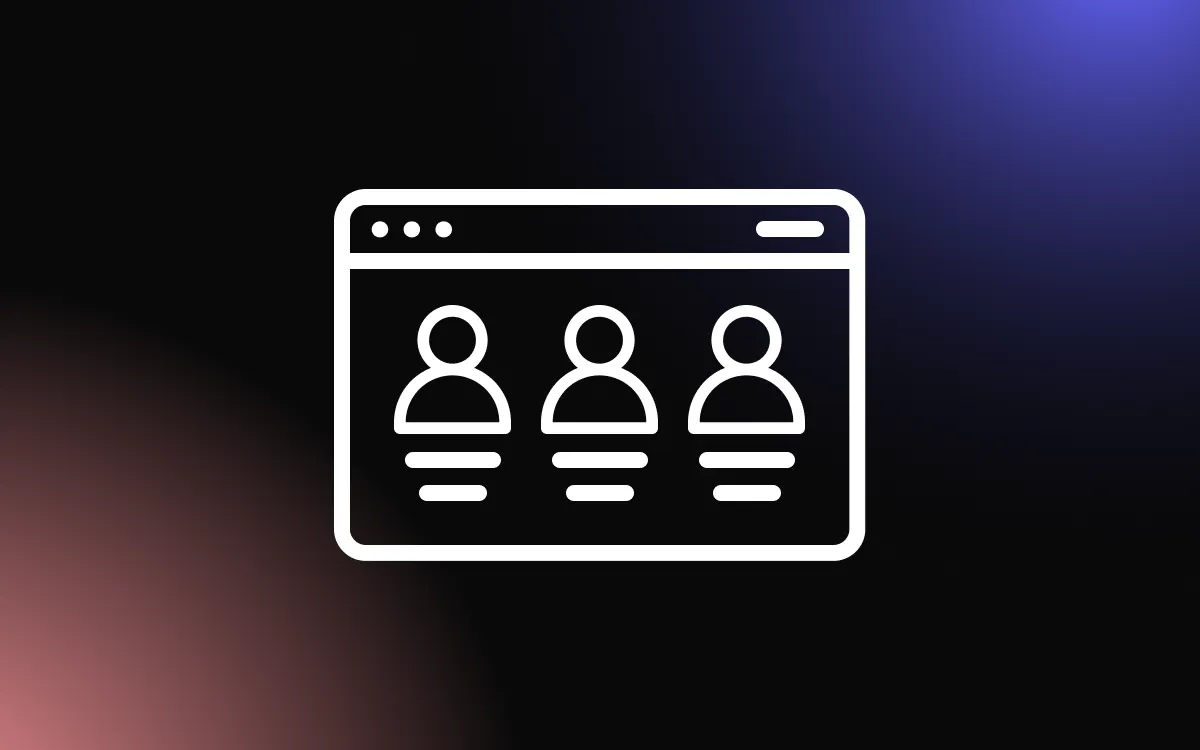
In the dynamic world of digital experiences, headless CMS platforms have emerged as a game-changer. These platforms, which separate the front-end presentation layer from the back-end functionality, offer unparalleled flexibility, scalability, and performance.
This article will delve into the top headless platforms in the market, providing you with an overview of their features, benefits, and use cases.
Whether you're a developer looking for a flexible solution, a marketer seeking to deliver omnichannel experiences, or a business owner aiming to future-proof your digital presence, this article will guide you towards the headless platform that best suits your needs.
Understanding Headless Platforms

Definition of Headless Platforms
Headless platforms, often referred to in the context of content management systems (CMS) or e-commerce platforms, are back-end systems where the front-end or presentation layer has been decoupled from the back-end or functional layer.
This separation allows developers to work on the back-end and front-end independently of each other, providing more flexibility in how content or data is presented to the user.
In a headless platform, the back-end does all the heavy lifting: storing data, managing content, handling transactions, and so on. The front-end, which could be a website, a mobile app, a digital kiosk, or any other digital interface, simply retrieves the data from the back-end via APIs and presents it to the user.
The Role of Headless Platforms in Modern Business
Headless platforms have gained popularity in recent years due to the rise of omnichannel marketing and the need for businesses to deliver content seamlessly across multiple touchpoints.
With a headless platform, businesses can manage their content or data in one place (the back-end) and display it across various front-end platforms without the need for multiple back-end systems.
This flexibility allows businesses to provide a consistent user experience across all channels, whether it's a website, a mobile app, a smartwatch app, or even an IoT device. It also enables businesses to quickly adapt to new technologies and trends, as they can easily add a new front-end without having to overhaul their entire system.
Benefits of Using Headless Platforms
There are several benefits to using headless platforms. Firstly, they offer greater flexibility in terms of design and user experience. Since the front-end is decoupled from the back-end, designers and developers are not constrained by the limitations of the back-end system and can create custom user experiences tailored to each platform.
Secondly, headless platforms can improve performance. As the front-end only retrieves the data it needs via APIs, it can result in faster load times and a smoother user experience.
Thirdly, headless platforms can facilitate scalability. As the front-end and back-end are separate, they can be scaled independently based on demand.
Lastly, headless platforms can promote innovation. By separating the front-end from the back-end, businesses can experiment with new technologies on the front-end without risking the stability of their back-end system.
Top Headless Platforms
Strapi

Strapi is an open-source Headless CMS that offers developers the freedom to choose their preferred tools and frameworks. It provides a customizable API, enabling developers to build, deploy, and manage their content more efficiently.
Strapi is designed to optimize the development process with features like hot-reloading, auto-generated documentation, and a robust plugin system. It also supports both REST and GraphQL. With its extensible admin panel, non-technical users can easily manage the content. Strapi is self-hosted, which means you have complete control over the data.
Amplience

Amplience is a Headless CMS and Digital Experience Platform (DXP) that focuses on facilitating the creation, optimization, and delivery of high-quality, engaging digital content across various channels.
It offers features like content scheduling, previewing, and automation, making it a great choice for businesses looking to streamline their content management processes. Amplience is designed to integrate with existing eCommerce solutions and allows for dynamic media management, ensuring that your content looks great on any device.
Directus

Directus is an open-source Headless CMS that provides a smart platform for managing any SQL database using a real-time API. It's designed to wrap your new or existing SQL database with a realtime GraphQL+REST API for developers, and an intuitive admin app for non-technical users.
Directus is perfect for projects that require custom databases but also need a user-friendly interface for managing the content. It also offers features like multi-language support, custom roles and permissions, and file storage adapters.
Ghost

Ghost is a robust open-source Headless CMS and publishing platform designed to create and manage online publications.
Built on a modern technology stack, Ghost offers a clean, user-friendly interface, making it a popular choice for bloggers, journalists, and publishers. It supports SEO out of the box and offers built-in email newsletters, making it a comprehensive solution for content creators. Ghost can be self-hosted or hosted by Ghost professionally.
Sanity

Sanity is a platform for structured content that comes with an open-source editing environment. Sanity is designed to build content infrastructure and offers features like real-time collaboration, version history, and content distribution to any device, platform, or product.
It also provides a powerful query language (GROQ) that allows you to fetch exactly what you need from your content. Sanity is a great choice for businesses that need to manage and distribute structured content at scale.
Magnolia

Magnolia is a headless enterprise CMS that allows you to manage and deliver digital experiences on any channel. It's known for its robust integration capabilities, powerful content modeling, and a user-friendly interface that empowers both developers and marketers.
Magnolia supports multi-language, multi-site, and multi-channel content management. It also offers personalization features, allowing businesses to deliver tailored experiences to their audience.
Contentful

Contentful is a modern Headless CMS that provides a powerful API-first approach, allowing developers to create a unique digital experience. It offers a comprehensive set of tools for creating, managing, and delivering content across multiple platforms and devices.
Contentful supports a microservices architecture, allowing you to integrate with other services like analytics, localization, and search. It also provides a rich text editor for content creators to manage their content.
Agility CMS

Agility CMS is a Headless CMS with a Page Management feature. It combines the flexibility of a traditional CMS with the speed of a headless CMS. Agility CMS is designed to offer seamless content management and delivery, and is a great choice for websites that require complex page management.
It supports multi-language and multi-site content management, and offers a cloud-based solution, ensuring that your content is always up-to-date.
Core DNA

Core DNA is a fully managed web CMS that gives businesses the tools to create digital experiences on a global scale. It's a multi-site, multi-language, and multi-brand platform with a range of built-in solutions including eCommerce, intranets, portals, and more.
Core DNA offers a SaaS-based solution, meaning you don't have to worry about updates, security, or scalability. It also provides personalization features, allowing you to deliver a tailored experience to your audience.
Cockpit CMS

Cockpit CMS is a self-hosted, API-first CMS that doesn't force you to make compromises in how you implement your site. The CMS is a backend only content management system to manage and structure your applications or websites content.
Cockpit CMS is lightweight and easy to install, making it a great choice for small projects. It supports both REST and GraphQL, and provides a simple and intuitive interface for managing your content.
Choosing the Right Headless Platform

Understanding Your Business Needs
The first step in choosing the right headless platform is understanding your business needs. What are your goals for using a headless platform? Are you looking to improve your website's performance? Do you want to deliver a seamless user experience across multiple channels? Or are you looking to streamline your content management process?
Once you've identified your goals, consider the specific requirements that a platform needs to meet to help you achieve these goals.
For instance, if you're looking to deliver content across multiple channels, you'll need a platform that supports omnichannel content delivery. If performance is a priority, look for a platform that offers features like content delivery networks (CDNs) and caching to speed up content delivery.
Evaluating the Features of the Platform
After identifying your business needs, evaluate the features of the potential headless platforms. Does the platform offer the functionality you need? Does it support the content types you work with? Does it offer APIs for easy integration with your existing systems and tools?
Also, consider the platform's ease of use. A platform with a steep learning curve may slow down your team and impact productivity. Look for a platform with a user-friendly interface and good documentation to help your team get up to speed quickly.
Considering the Cost of the Platform
Finally, consider the cost of the platform. Headless platforms can range in price, with some offering free tiers, while others require a significant investment. When evaluating the cost, consider not only the subscription fees but also the potential costs associated with implementation, maintenance, and any additional services you may need, like support or training.
Remember, the most expensive platform isn't necessarily the best one for your business. The right platform is the one that meets your business needs, offers the features you require, fits within your budget, and can grow with your business over time.
Future of Headless Platforms

Current Trends in Headless Platforms
Headless platforms are currently experiencing a surge in popularity, driven by the increasing demand for flexibility, performance, and omnichannel content delivery. Businesses are recognizing the benefits of decoupling the front-end and back-end of their digital experiences, allowing for greater agility and faster content delivery.
One trend we're seeing is the rise of "hybrid" or "decoupled" systems that combine the best of traditional and headless architectures. These systems offer the flexibility and performance benefits of headless platforms, while still providing a user-friendly interface for content management.
Another trend is the integration of headless platforms with other technologies like artificial intelligence (AI) and machine learning. These integrations can enable more personalized and dynamic content delivery, improving user experience and engagement.
Predictions for the Future of Headless Platforms
Looking ahead, we can expect the adoption of headless platforms to continue to grow. As businesses strive to deliver seamless experiences across an ever-growing number of channels, the flexibility and performance benefits of headless architectures will become increasingly important.
We can also expect to see further advancements in the capabilities of headless platforms. This could include more sophisticated AI and machine learning integrations, enabling even more personalized and dynamic content delivery. Additionally, we may see improvements in the tools and interfaces for managing content on headless platforms, making them more accessible to non-technical users.
Furthermore, as more businesses adopt a microservices architecture, headless platforms will likely play a key role in this shift. By decoupling various aspects of the digital experience, businesses can adopt a more modular approach, selecting the best tools for each task.
Conclusion
In conclusion, headless platforms represent a significant shift in the way we approach digital experiences. They offer the flexibility to create unique, tailored user experiences across various channels, the scalability to grow with your business, and the performance to meet today's demanding digital standards.
Choosing the right headless platform for your needs is a crucial step in harnessing these benefits. With the insights provided in this article, you're now better equipped to make an informed decision. So, let's embrace the headless revolution and create digital experiences that are as flexible as they are powerful.


![How To Build a Squarespace Website — Full Guide [2024]](/_next/image?url=https%3A%2F%2Fwebsite-assets.commoninja.com%2Fdistribution%2F1737378505524_How_to_build_a_squarespace_website_2023.webp&w=640&q=75)